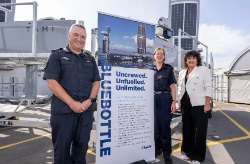Crown – Maori Partnership?
Some in New Zealand’s society today believe there is a Crown / Maori Partnership.
Let's go back to the time Te Tiriti was signed by the chiefs and Governor Hobson who was acting for the Queen of England.
It is agreed by those on both sides of the current debate that Article 3 of the treaty gave to Maori the rights and privileges of British subjects. This placed Maori signatories under the political control of the Queen therefore it is constitutionally impossible for the Queen to enter into a partnership with any of it's subjects.
To clarify the "Crown" in 1840 meant Governor William Hobson representing the British Government and the Queen.
The chief’s speeches on February the 5th 1840, prior to signing on the 6th, all indicate that they acknowledged that they would be below the Queen, and ‘partnership’ was not mentioned at all.
The word “partnership” does not appear anywhere in the Treaty/s or later translations. Nor does any other word that might be regarded as a synonym of “partnership”. And that’s true whether we’re talking about the English-language draft (Busby 4th final draft) from which the Treaty was translated into Maori, the Maori language version of the Treaty (Te Tiriti), or the so-called ‘official English version of the Treaty’ (bogus Freeman document). The word simply does not appear. (H/T Don Brash for this paragraph – Italics my additions)
Further, there was no mention of a ‘partnership’ at the four week 1860 Kohimarama Conference where approximately 200 chiefs from all over New Zealand attended. In fact several of the chief speeches stated clearly that the Queen would be above them.
The partnership myth entered the public square through an erroneous decision of the Court of Appeal in a 1987 case involving the New Zealand Maori Council. It is founded upon what researcher, Alan Everton describes as: “nothing more than the opinion of five judges, who combined a lamentable ignorance of New Zealand history with a willingness to ignore the constitutional principle that they were appointed to apply the law, not make it.” (H/T Peter Hemmingson for this paragraph)
In that 1987 case the Court of Appeal used the word 'partners' interchangeably with the word 'parties', and spoke also of a relationship ‘AKIN to’ a 'partnership'.
The Crown has a fiduciary obligation to all citizens (not just maori) but that does not make the citizens partners.
In a speech at Warkworth Winston Peters said “It is truly staggering that a claim of partnership for Māori is being made based on the Treaty of Waitangi, when Queen Victoria was not in partnership with anyone, in the UK, or the British Empire, on the day before the 6th of February 1840, or the day after.”
Former Prime Minister David Lange quipped that he didn’t really believe Queen Victoria had signed a Treaty of equality and partnership with “500 thumbprints”
In closing, it defies logic to believe that, arguably, the Greatest Empire in the 1800s sailed half way around the world to go into a ‘partnership’ with a menagerie of warring chiefs who in 1831 wrote to King William and asked for protection, and yet fought the Zulu Nation costing thousands of lives to rule over them.


 Gordon Campbell: On The Left’s Electability Crisis, And The Abundance Ecotopia
Gordon Campbell: On The Left’s Electability Crisis, And The Abundance Ecotopia NZ Government: Stay Safe On Our Roads This Easter
NZ Government: Stay Safe On Our Roads This Easter YWCA: Global Push Back Against Gender Equality A Growing Crisis In Aotearoa
YWCA: Global Push Back Against Gender Equality A Growing Crisis In Aotearoa Te Pāti Māori: Ngarewa-Packer - Fast-Tracking Seabed Mining Ignores Māori Opposition And Environmental Precedent
Te Pāti Māori: Ngarewa-Packer - Fast-Tracking Seabed Mining Ignores Māori Opposition And Environmental Precedent New Zealand Defence Force: Defence And Customs Strengthen Maritime Security With Uncrewed Surface Vessels
New Zealand Defence Force: Defence And Customs Strengthen Maritime Security With Uncrewed Surface Vessels SPCA: Huge Win With New Dog Tethering Regulations
SPCA: Huge Win With New Dog Tethering Regulations Community Housing Aotearoa: Ngā Wharerau o Aotearoa Says New Partnership Model Helping Ensure Right To A Decent Home Is Realised
Community Housing Aotearoa: Ngā Wharerau o Aotearoa Says New Partnership Model Helping Ensure Right To A Decent Home Is Realised


